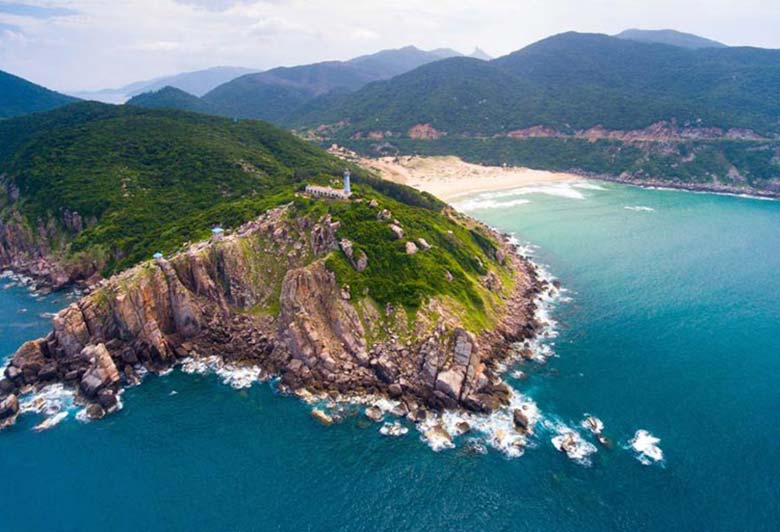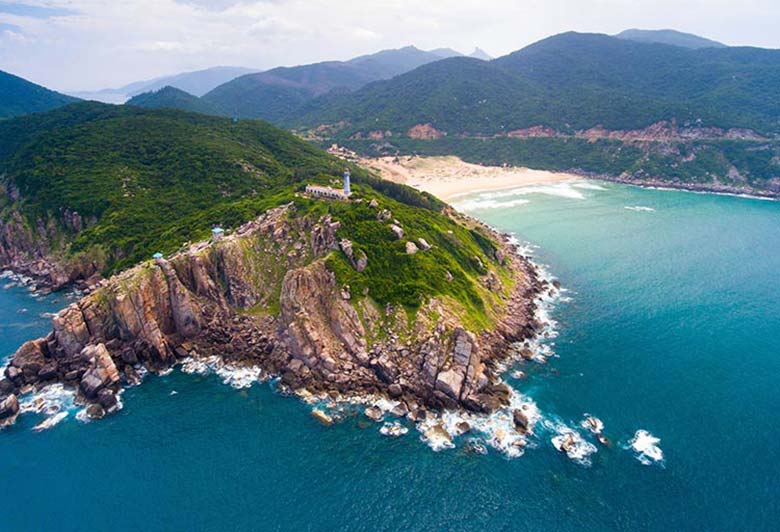 The easternmost province is a top choice for adventures and to enjoy the beauty of nature including some out-of-the-world landscapes.
The easternmost province is a top choice for adventures and to enjoy the beauty of nature including some out-of-the-world landscapes.
Phu Yen, located on the south central coast, is the first point on the Vietnamese mainland to welcome the sun every morning.
It has a diverse topography consisting of mountains, rivers, lagoons, bays, and islands and a myriad of beautiful natural sights for visitors to explore.
Best time to travel
Phu Yen’s sunny season is from January to around August, and is perfect for sightseeing. There are also lots of local festivals during these months, so remember to check their dates if you want to see them.
But April and May can be quite hot, so visitors who choose to go during this period should be mindful and take sun-protection gear and water.
From May until the end of July is the peak domestic tourist season, and during this period Phu Yen can get pretty crowded. It might not be an ideal time for those who prefer a quiet and relaxing holiday.
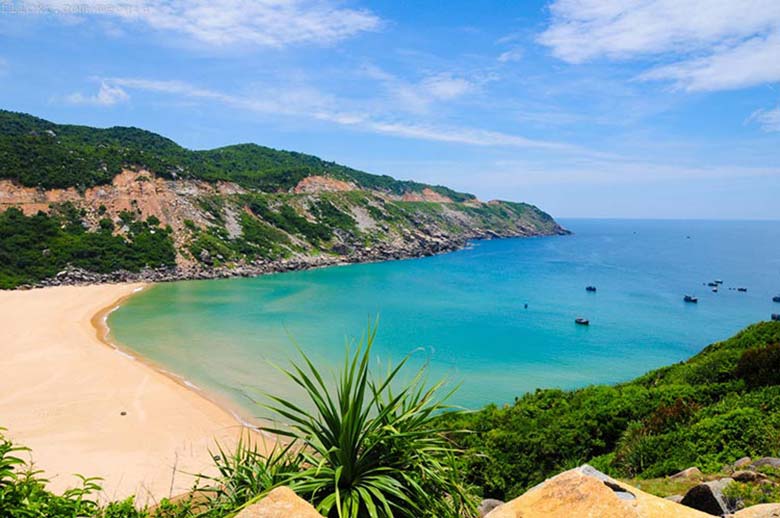 Photo by VnExpress/Meo Gia
Photo by VnExpress/Meo Gia
Where to go
Watching sunrise at Dai Lanh Cape
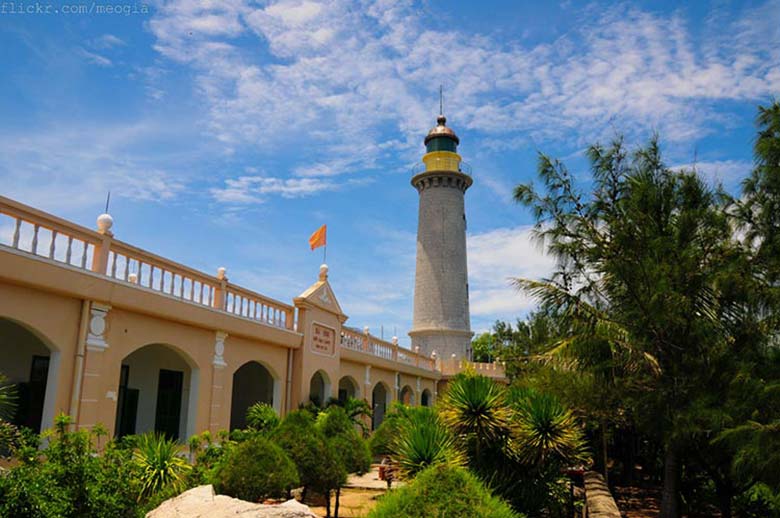 Photo by VnExpress/Meogia
Photo by VnExpress/Meogia
Dai Lanh Cape, around 35km from Tuy Hoa, the capital city of Phu Yen, is the first place in the country where the sun rises. The best spots to catch the sunrise from are up the lighthouse or on Mon Beach, both spectacular places.
Visitors can spend the night at Mui Dien lighthouse, and, when the time comes, take in the view of the bay and the ocean wide open right before their eyes. The feeling when standing on the top, with the wind carrying the smell of the ocean and caressing your skin and hair, and watching the spectacular scene unfold is indescribable.
You need to call up the lighthouse and make arrangements the day before. Tickets cost around VND10,000 ($0.43)
Camping on Mon Beach for the night and waiting for the sunrise can be an unforgettable experience. The beach is located behind Dai Lanh Lighthouse.
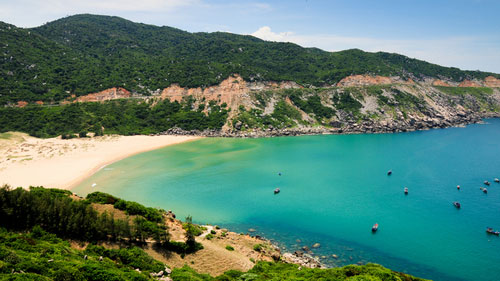
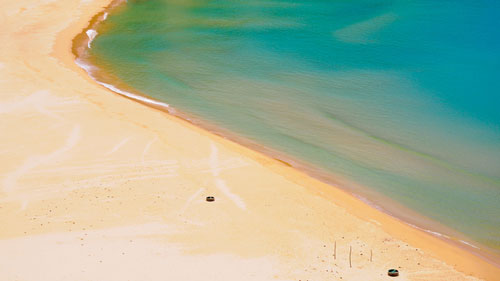
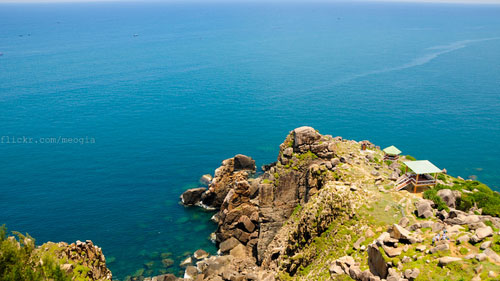
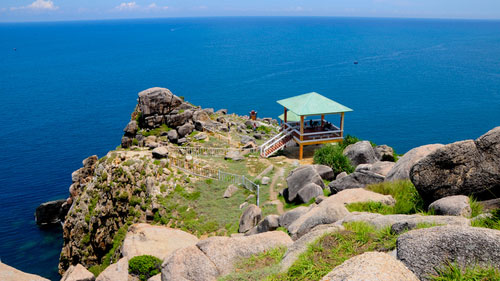
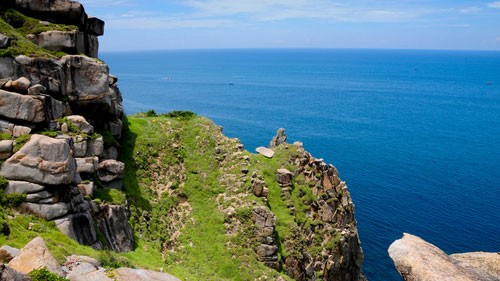
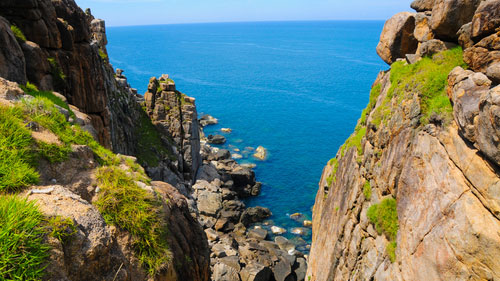 Explore hidden gem, Vung Ro Bay
Explore hidden gem, Vung Ro Bay
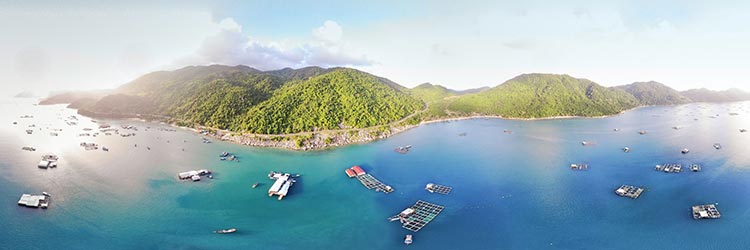 The beautiful aerial view of Vung Ro Bay in the central province of Phu Yen. Photo by thinhvu_photo
The beautiful aerial view of Vung Ro Bay in the central province of Phu Yen. Photo by thinhvu_photo
Vung Ro spreads over an area of 16.4 square kilometers, with beautiful beaches and the ocean on one side and forested mountains like Deo Ca and Hon Ba, and the highest peak, Da Bia (Tombstone Mountain), on the other.
It is situated in the commune of Hoa Xuan Nam, Dong Hoa District, at the edge of Ca Pass. The drive, whether from the south or north, is extremely scenic. The coastal road offers a magnificent, unbroken view of the bay’s blue waters, fishing villages, the craggy pass, the green mountains, and the white sandy beaches.
There are hundreds of floating homes, fish farms and wooden fishing boats in the main bay. From here, visitors can take a boat to visit seafood farms, try to be a fisherman for a day and learn how locals catch lobsters or go catching fish or squid.
The seafood at the floating restaurants here are obviously as fresh as it possibly can be as it goes straight to the kitchen from the floating farms around. Some beers while floating on the blue lagoon, and this becomes an experience one just should not miss.
There are also other recreation options such as jet-skiing, snorkeling and visiting historical relics for visitors.
Vung Ro Bay has 12 beautiful, pristine beaches such as Lach, Mu U, Chua, Chan Trau which are perfect for a refreshing dip in the cool, clear water or just unwinding in a tranquil, quiet place on the white sand.
Take stunning photos at Da Dia Reef
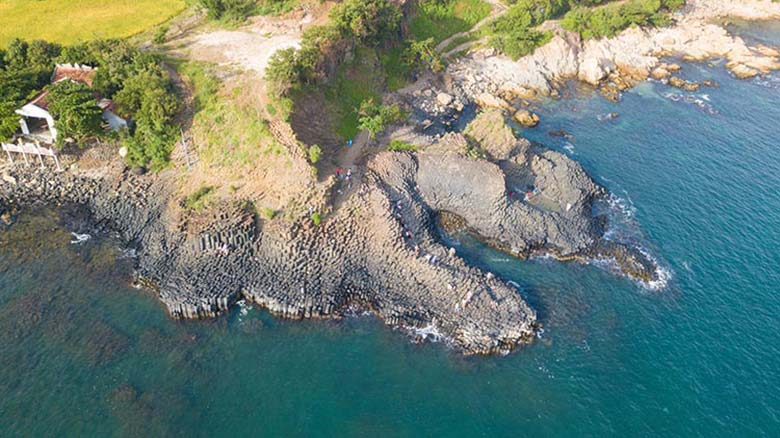 Da Dia Reef is one of the popular tourist attractions in central Vietnam. Photo by Shutterstocks/Lequangnhut
Da Dia Reef is one of the popular tourist attractions in central Vietnam. Photo by Shutterstocks/Lequangnhut
Da Dia Reef (Ganh Da Dia) is a unique geological structure with black and yellow basalt rocks in all kinds of conceivable shapes spread over an area of more than a square kilometer along the edge of the sea. From a distance, it looks like a giant black beehive. It’s situated about 30 km to the north of Tuy Hoa City.
According the geologists, it was created by volcanic eruptions millions of years ago. The lava, when it came in contact with the water, cooled, contracted and fractured and formed vertical or horizontal columns before becoming polygonal rocks like they are today.
Besides Da Dia Reef, there are only three other places on earth that have this magnificient phenomenon.
The reef is the perfect place to take those photos of mysterious, out-of-this-world landscapes. It is also great for wedding photos.
Hike up Nhan Mountain
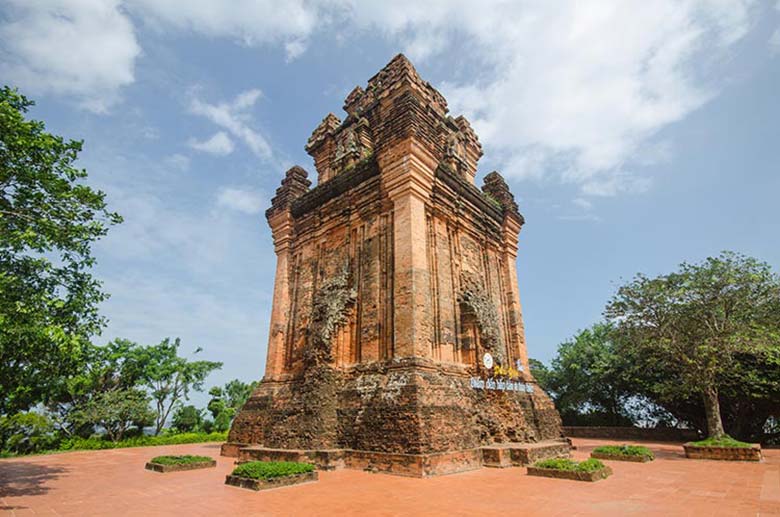 Photo by Waj
Photo by Waj
Nhan Mountain is situated on the northern bank of the Da River in the middle of the Tuy Hoa Delta. It is covered with forests. From the top, 64 m above sea level, one can get a panoramic view of Tuy Hoa City with its lush paddy fields and the turquoise sea. Watching the sunset from the summit is an unforgettable experience.
Situated at the peak of Nhan Mountain is Nhan Tower, an ancient Champa structure built in the late 11th – early 12th century. This is one of the many remains of the Champa culture scattered throughout the central region.
Enjoy oyster and beautiful sunset at O Loan Lagoon
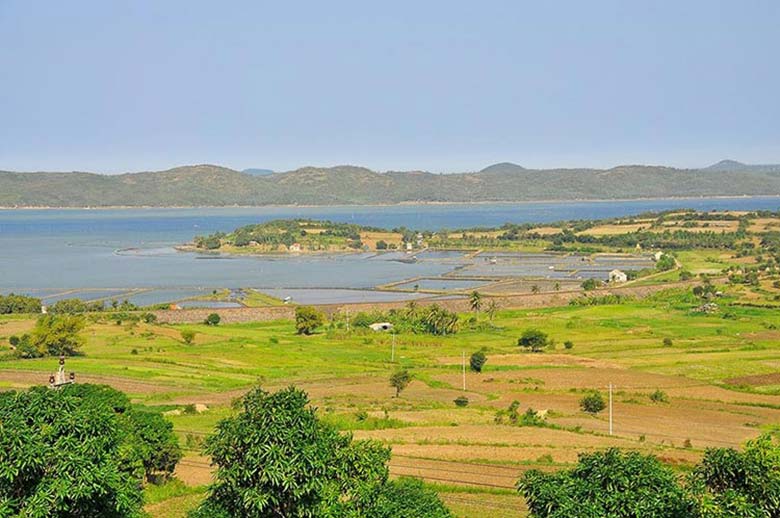 The lagoon itself is a bewitching sight. Situated to the south of Chi Thanh village in Tuy An Commune, O Loan Lagoon is surrounded by greenery in the form of paddy fields and Dong Chay and Cam mountains and An Hai Islet. This is another great place from where to watch the sunset in Phu Yen.
The lagoon itself is a bewitching sight. Situated to the south of Chi Thanh village in Tuy An Commune, O Loan Lagoon is surrounded by greenery in the form of paddy fields and Dong Chay and Cam mountains and An Hai Islet. This is another great place from where to watch the sunset in Phu Yen.
What makes this lagoon special is its many rare and valuable seafood species such as grouper, blood clam and flower crab. But a must-try here are the O Loan oysters. It is high in nutrition and also tastes amazingly good. They are fried, cooked in a soup or rice porridge, the lagoon’s specialty, or grilled. The oyster’s sweetness and a hint of saltiness combined with the creamy rice porridge and the fragrance of pepper and minced coriander make for a wonderful dish.
Other places to visit
Journey out to surrounding islands: Phu Yen has many beautiful, mainly unspoiled, islands, each with their own charm. Some, like Hon Yen, have beautiful coral reefs, Nhat Tu Son has an underwater sandbar and Mai Nha is Phu Yen’s Robinson Island.
Mang Lang Church: One of the oldest churches in Vietnam, it is situated near the Ky Lo River (aka Cai River). The Gothic style church is where the first ever book was printed in Vietnamese by Father Alexandre de Rhodes.
Ong Cop Bridge: Also called Tuy An Bridge, it is the longest wooden bridge in Vietnam. It was built by locals as a shortcut between 2 villages.
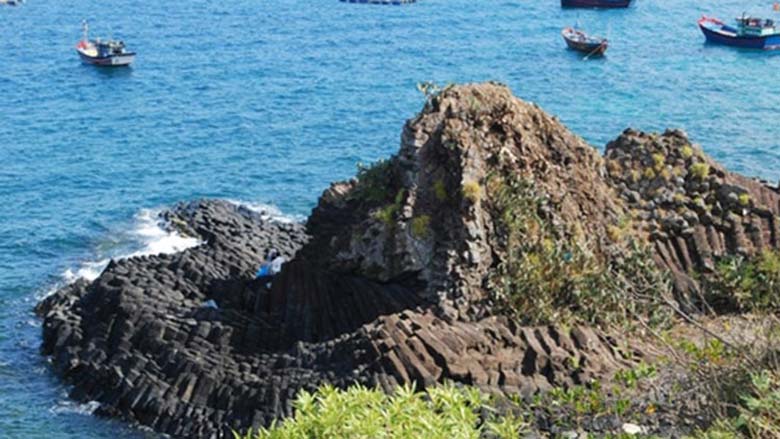
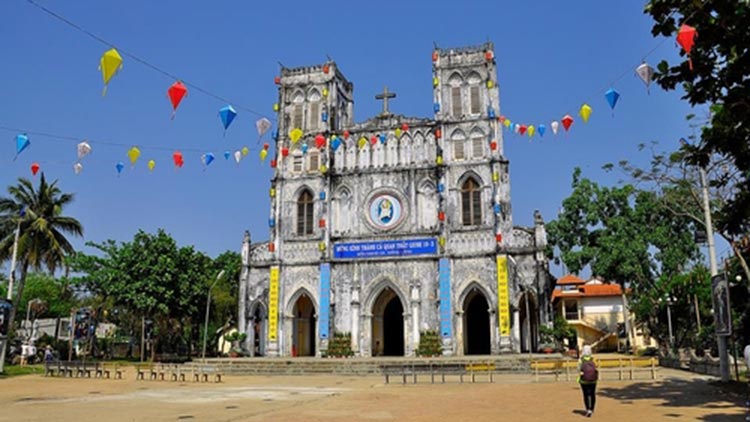
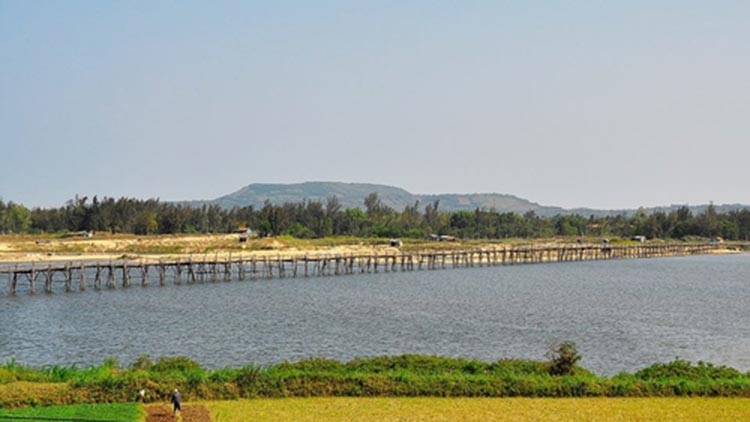
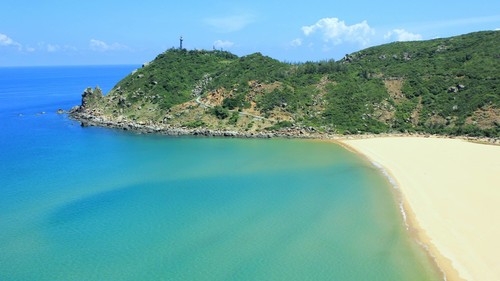
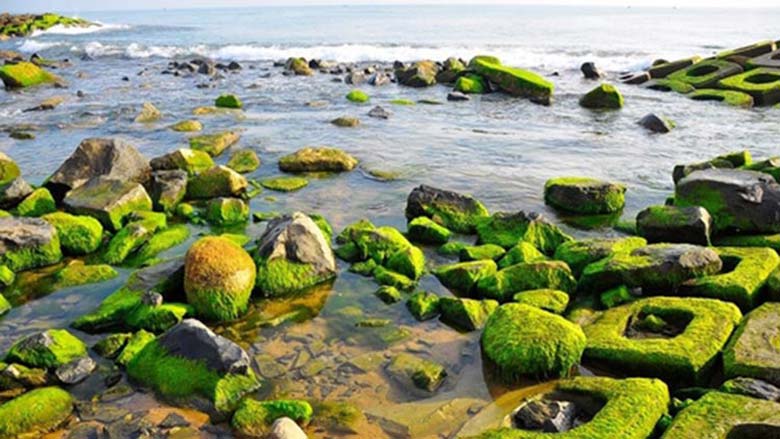
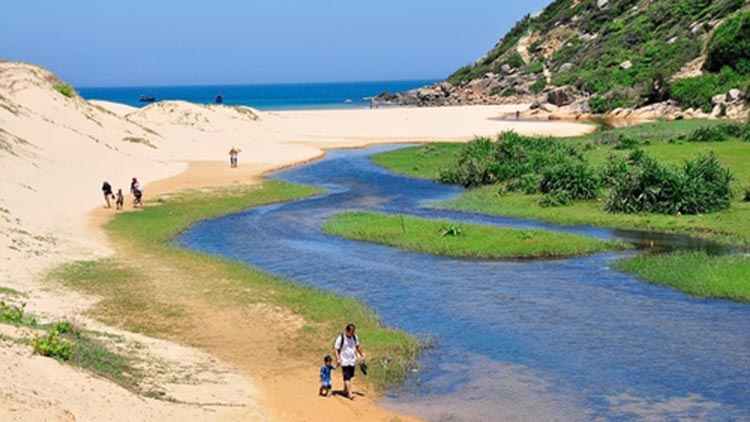
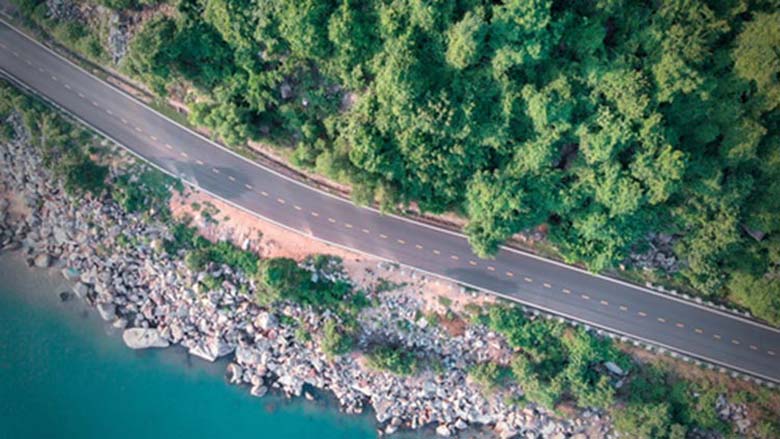
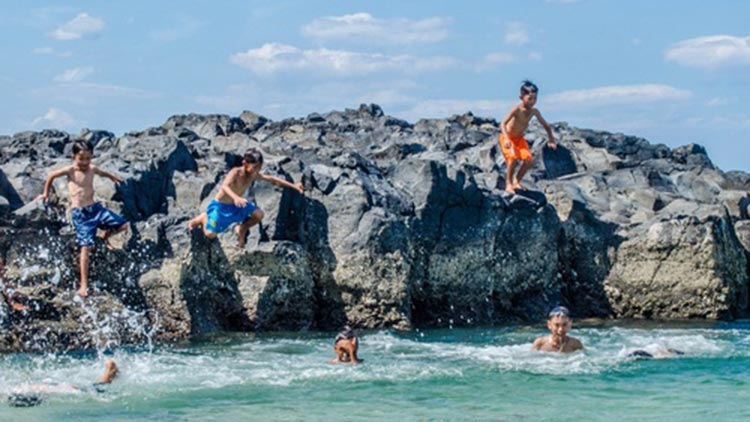 How to get there
How to get there
From Saigon, visitors can take a bus, train or airplane to Phu Yen Province’s capital Tuy Hoa.
A one-way ticket on a bus costs VND180,000 – 300,000 ($8-13) and the journey takes around 12 hours.
Visitors could take a night train and arrive in Tuy Hoa the next morning to save precious sightseeing time. The fare is VND500,000 – 1.04 million ($22 – 46).
From Hanoi, there are trains and flights and the train fare is VND500,000 – 1.3 million ($22 – 56). The SE3 train departs from the capital at 10:00 p.m. and arrives at Phu Yen at around 8:30 p.m. the next day.
Flights to Tuy Hoa from Saigon and Hanoi cost VND1.5 million – 1.9 million ($65 – 82) for a one-way ticket respectively. The airport is around 10 km from the city downtown, so remember to arrange for transportation to your hotel beforehand to save time and money. You can take a taxi on arrival if you choose so.
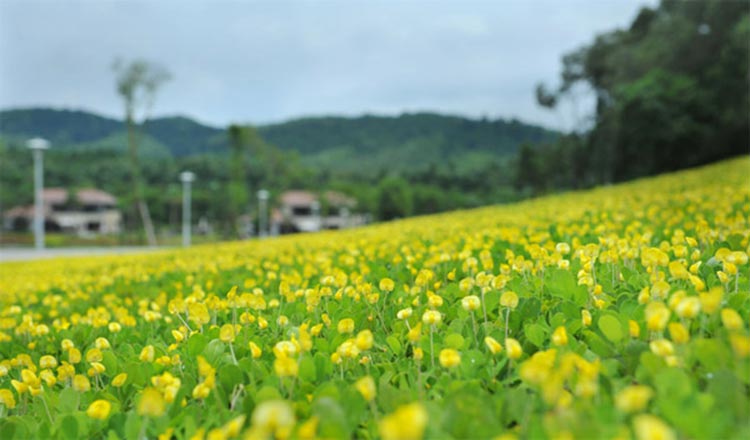 Story by Linh Nguyen, Nguyen Quy
Story by Linh Nguyen, Nguyen Quy
VnExpress.net

